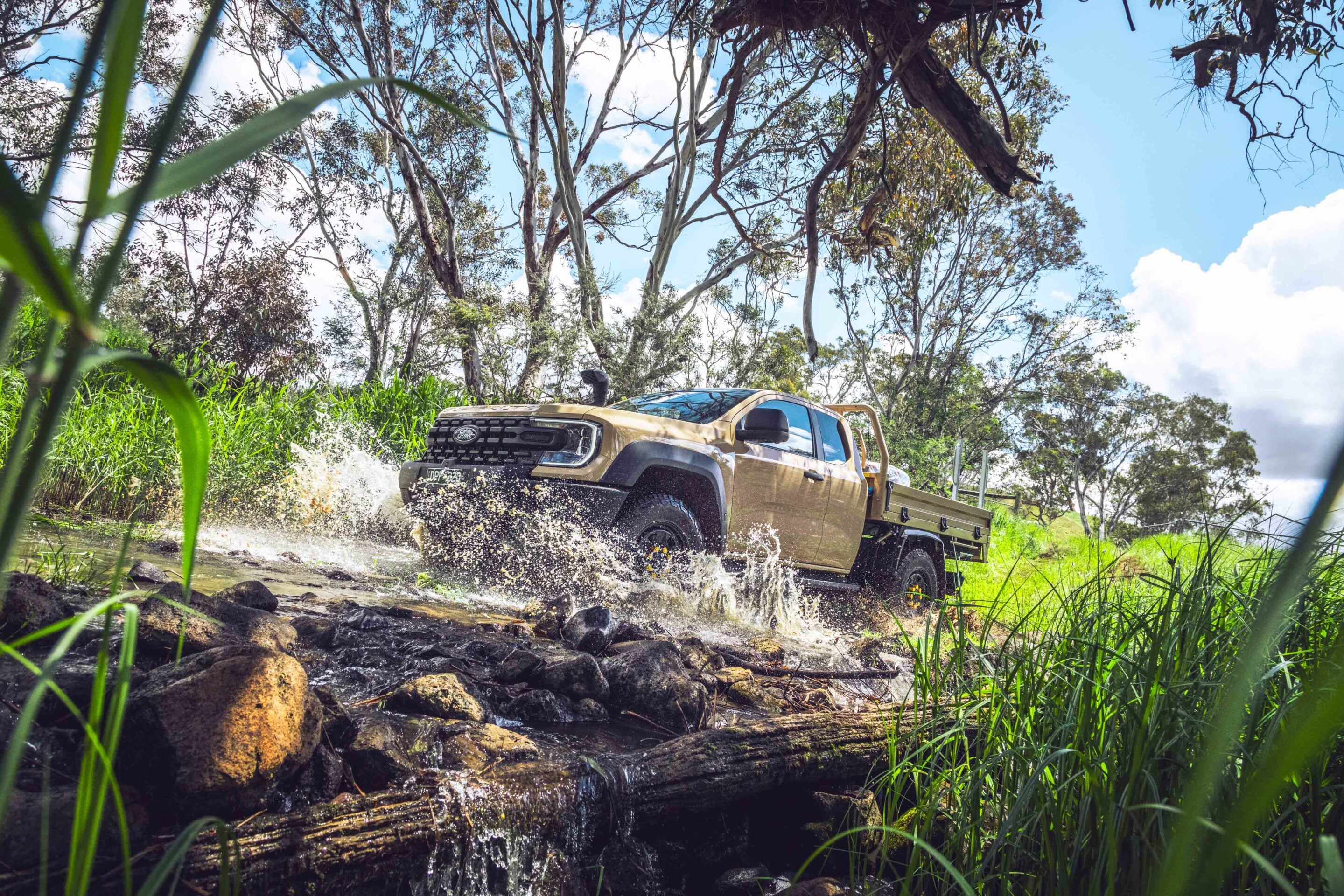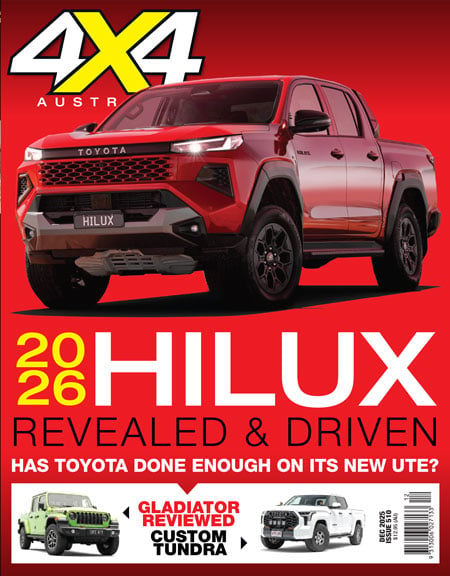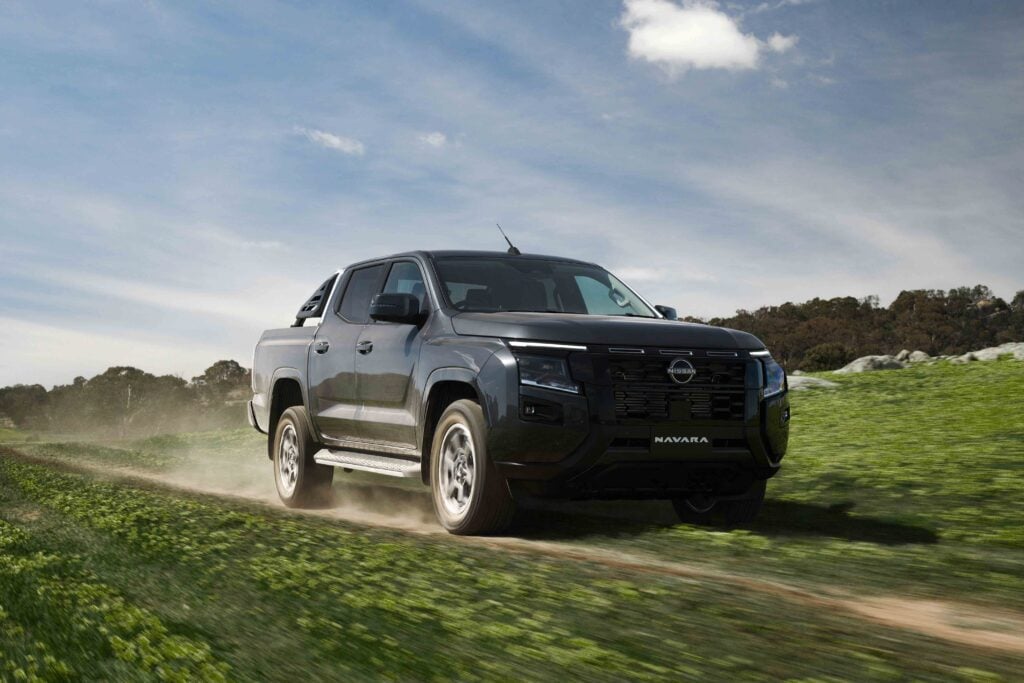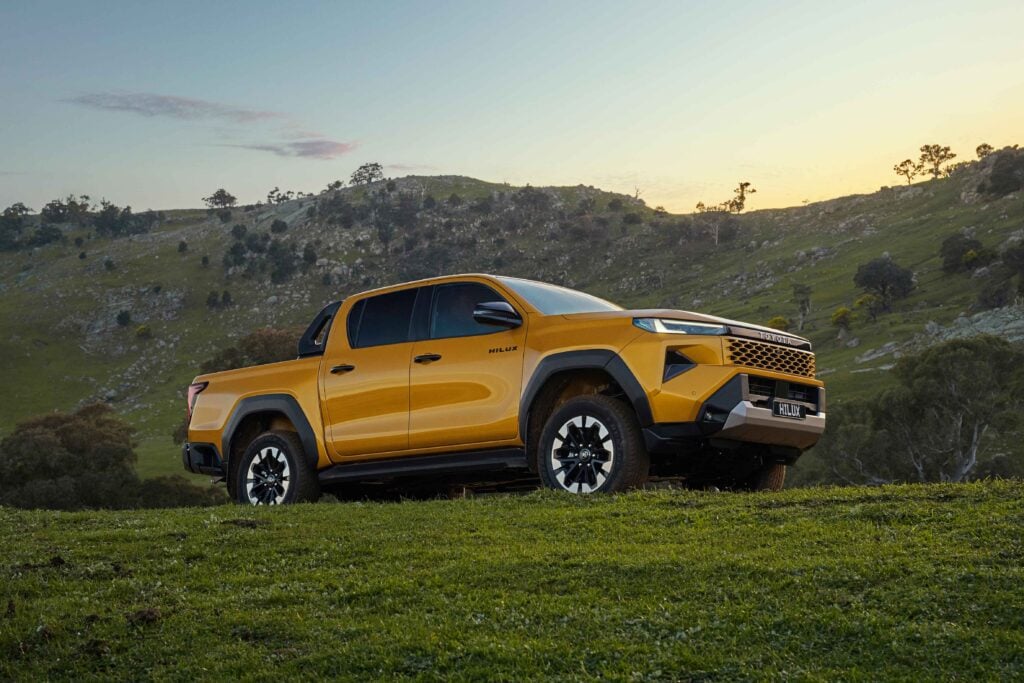The Ranger Super Duty transforms Ford’s midsize ute into a true workhorse. With a beefed-up chassis, tougher suspension, and off-road tech built in, it’s designed for heavy loads, rugged tracks and serious job sites.
The launch drive for the Ranger Super Duty presented us with a fleet of single- and extra-cab models fitted with trays, and the chance to sample them on sealed and unsealed roads, a man-made off-road course, and a real-world trek up to Mount Terrible on the edge of the Victorian High Country.
We chose an extra-cab, as we see it more as a touring rig than a single-cab thanks to its additional interior space — and because we’ve never previously been able to get into an extra-cab Ranger of any kind.
At first glance the Super Duty looks physically larger than a regular Ranger thanks to its beefier front-end styling, taller tyres and extra ride height, but once you step inside it’s familiar territory. The cabin layout and controls are pure Ranger, although it’s a little odd to see the larger 12-inch multimedia screen in a model with cloth seats. Still, all the controls operate as expected, and anyone who has driven a P703 Ranger will feel instantly at home — which is a good thing, because the interior design remains one of the most functional and practical in the mid-size ute segment.
Hit the start button and the Lion V6 fires up with a familiar rumble, while the Ranger e-shifter feels like the unwelcome cousin at Christmas lunch – you know it well, but you also know you could do better. That’s where the similarities end, because as soon as you drive off you can feel the difference in the Super Duty chassis.
On-road performance
Any vehicle built to haul and carry these kinds of loads will always feel stiffer on the road, and you will notice every bump.
This isn’t just due to the strengthened chassis and firmer suspension – the LT-rated tyres also contribute, with their heavy-duty sidewalls adding further rigidity. We expect the ride to improve with some weight in the tray, but we’ll have to wait for our own testing to confirm that, as all the launch vehicles were unladen.
The ride quality isn’t harsh or uncomfortable, but it’s a long way from the plush ride of a regular Ford Ranger. It’s a constant reminder of what this vehicle is built to do, and if you were considering a Super Duty purely for its tougher looks, be prepared for the compromised ride quality when running unladen. This isn’t a flaw in the Ranger Super Duty – it’s simply the reality of a purpose-built workhorse.
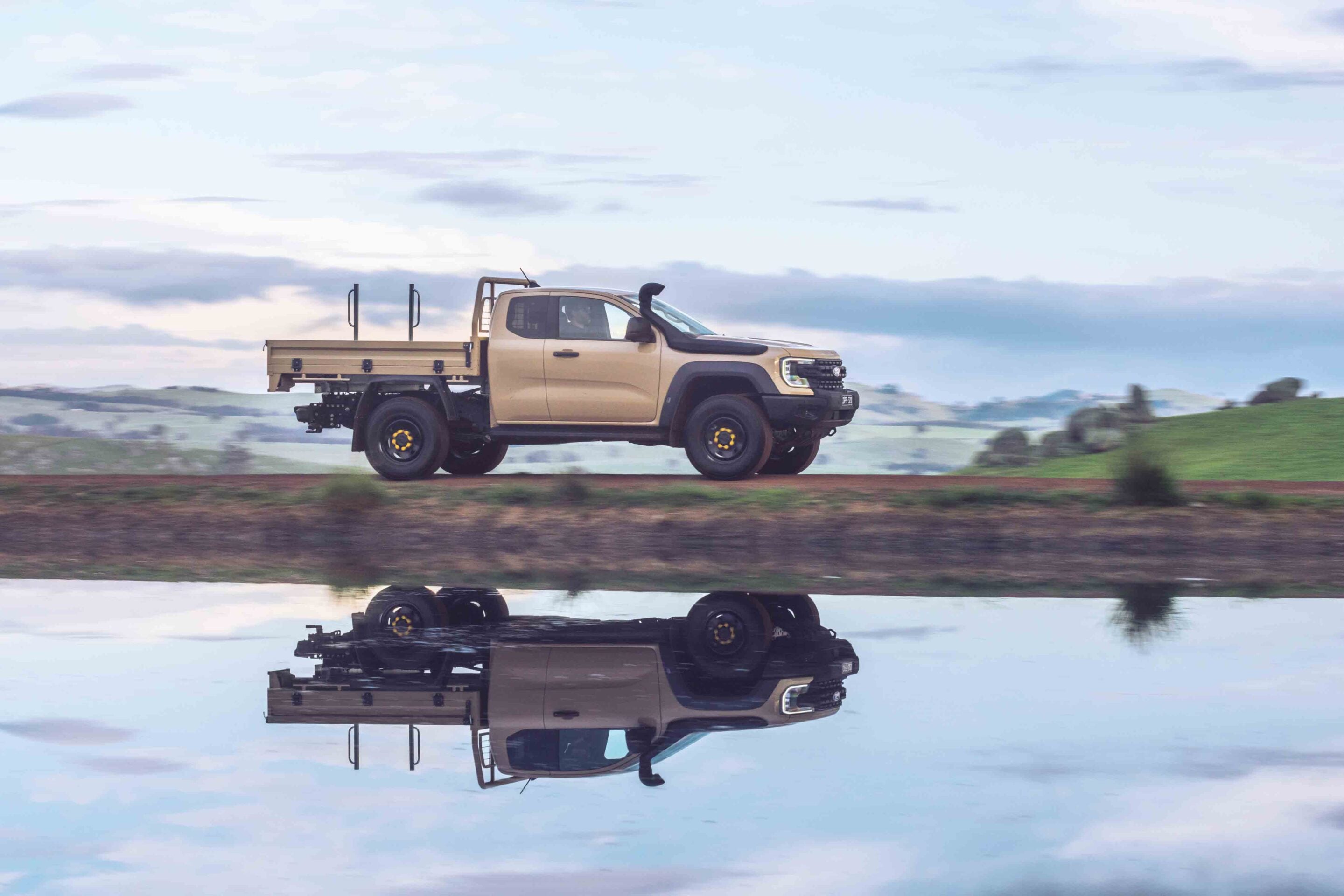
Another negative of the SD’s tyres is that their increased diameter affects acceleration, and when you add this to the extra weight of the Super Duty, you really feel the difference in pick-up when you put your boot into it. We noticed the same effect when we went up to 285/70 tyres on our V6 Ranger Sport a couple of years back; taller tyres always hurt acceleration and fuel economy.
Out on the road, the suspension does an amazing job of controlling the SD’s mass, and it handles a mountain road better than any truck with this sort of capability should. It feels firm but well planted, turns into corners precisely and holds its line with ease.
This is also where the e-shifter became annoying, as the small buttons on the side of the handle for manual gear selection are less than ideal for regular use. Despite all our time in Rangers with this gear selector, its use still isn’t second nature. This annoyance would be amplified if you had a load on or were towing and needed to downshift to make full use of the engine braking.
Off-road performance
On both the man-made 4×4 track and the rocky climb up the Mount Terrible track, the Super Duty made light work of the obstacles.
On the test track we were able to try the Turn Control function, which brakes the inside rear wheel to reduce the turning radius on tight off-road corners, and the Trail Control system which — like Toyota’s Crawl Control and Kia’s X-Mode — gives the driver low-speed cruise control with excellent torque distribution for climbing and descending steep or technical terrain. It’s one off-road ADAS feature that really works well and is genuinely worth using.
Most of the off-road sections were easy enough to traverse in Mud and Ruts mode, and for anything trickier it was simply a matter of selecting low range manually and locking the centre and rear diffs to get us up and over. There was no need for the front locker in this instance.
The taller bonnet of the Super Duty does make it a little harder to see the track ahead, but the 360° camera and under-car view make things much easier, both in front and behind. Speaking of behind, thanks to the DAT rear bar all of the Driver Assistance Tech hardware — including parking sensors and cameras — remains fully functional.
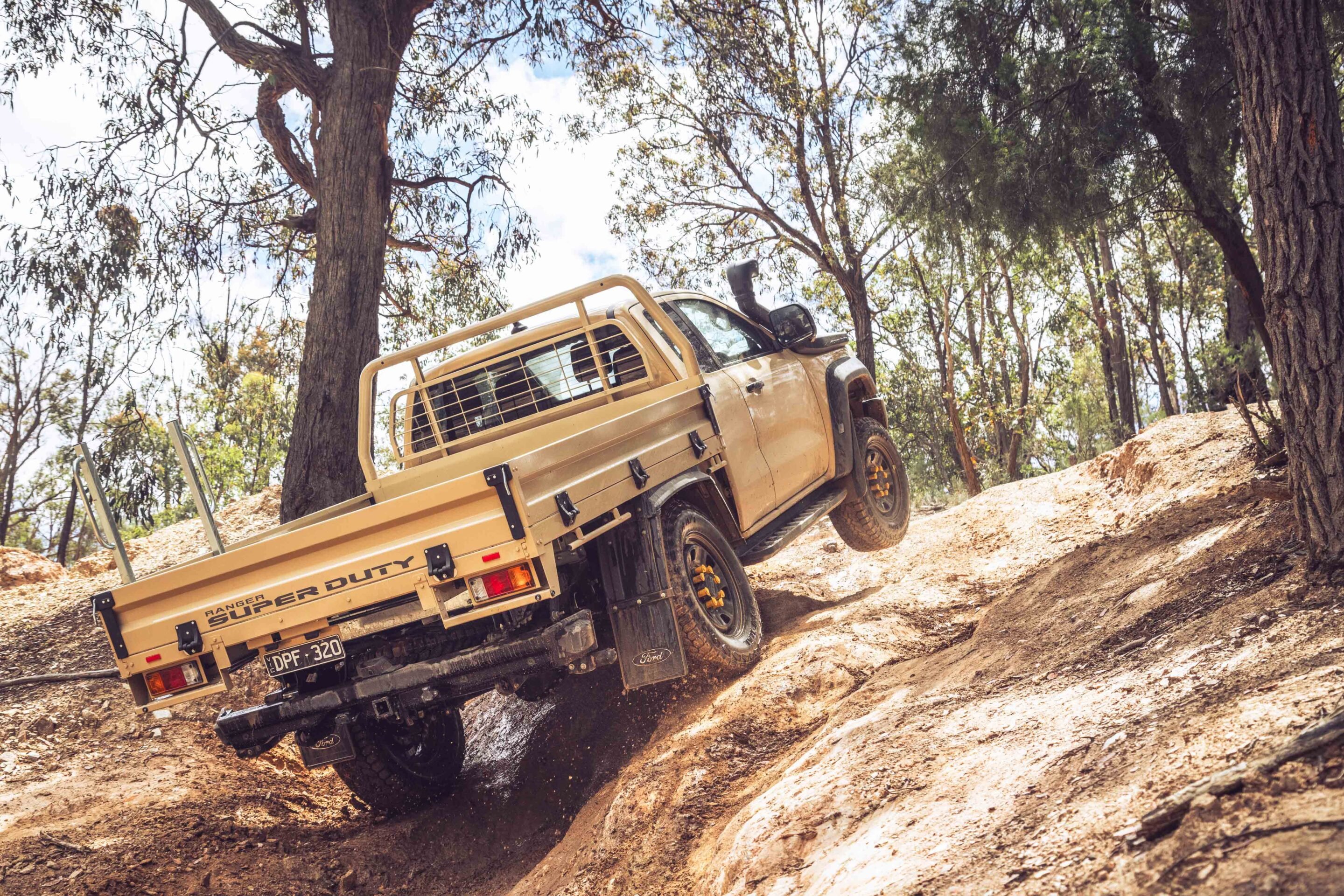
First impressions
Our first impressions of the Ranger SD have us thinking the Ranger certainly deserves its Super Duty stamping.
It brings new levels of capability and functionality to the midsize 4×4 market and removes the need for aftermarket GVM upgrades and hardware, with everything now covered by Ford. It’s a unique vehicle designed to fill a niche in the market – but it’s a niche that will also appeal to touring four-wheel drivers.
We recommend
-
 News
NewsFord reveals 2026 updates for Ranger and Everest
Ford’s 2026 updates bring more power, smarter tech, and refreshed styling to Ranger and Everest
-
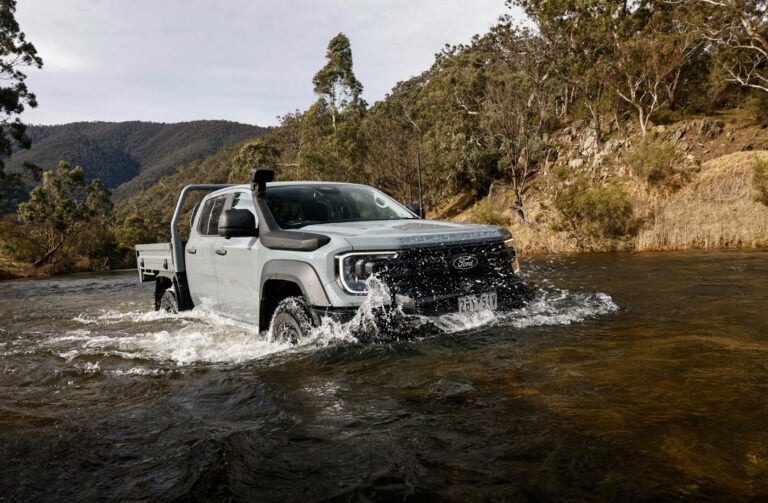 News
NewsFord Ranger Super Duty to arrive in Australia ahead of schedule
Ford confirms deliveries of its new Ranger Super Duty will commence later this year
-
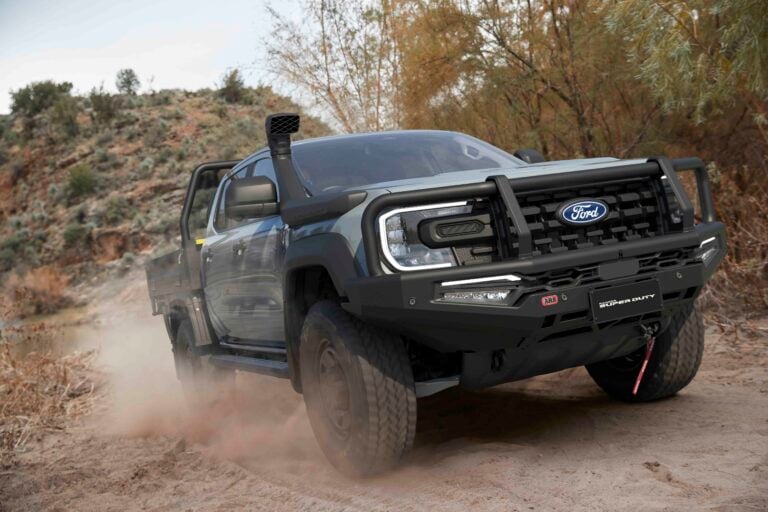 News
News2026 Ford Ranger Super Duty: Full specs revealed
Ford has officially released the full specs for its upcoming 2026 Ranger Super Duty, set to launch in Australia early next year


